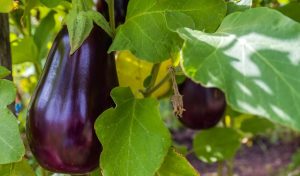If you’re a gardener, then you know that adding Jasmine plants to your garden is a must.
Jasmine plants are beautiful and fragrant, and they add a touch of elegance to any garden.
But where should you plant your jasmine?
Jasmine likes full sun or partial shade and well-drained soil. It can also tolerate some clay soils. You will want to avoid placing it in an area that is too windy as this can damage the fragile stems. When it comes to containers, Jasmine does best in a pot that is at least 12 inches wide. Be sure to use a good quality potting mix and water regularly.
Where does Jasmine grow best?
Jasmine is a tropical plant, so it grows best in warm climates.
In the United States, it can be grown outdoors in zones 10 and 11.
If you live in a colder climate, you can still grow Jasmine indoors as a houseplant.
Just place it near a sunny window where it will get some bright light.
Growing Jasmine against a wall
If you have the space, consider growing Jasmine against a wall.
It will need some support to climb, so you will need to provide that with a trellis or other type of support. Be sure to water regularly and fertilize monthly during the growing season.
One of the advantages of growing your Jasmine against a wall is that the plant will benefit from the heat that the brick work collects during the daytime.
This heat will radiate from the wall helping to protect your Jasmine from cool nights and even cooler weather conditions.

What is the best climate for Jasmine?
In general, Jasmine prefers a warm climate but can tolerate some cooler weather conditions.
If you live in a cold climate, you can still grow Jasmine indoors as a houseplant.
Just place it near a sunny window where it will get some bright light.
What are the benefits of growing Jasmine?
In addition to being a beautiful and fragrant plant, Jasmine has a number of other benefits.
Jasmine can act as an insect repellent, so it is great for gardens that are prone to pests.
It is also a fast-growing plant, so it can provide quick coverage in your garden.
And because it is drought-tolerant, it is a great plant for gardens in dry climates.
Does Jasmine do well in full sun or partial shade?
Jasmine does best in full sun or partial shade. This is a plant that loves warm weather, sunshine and protection from cold winds.
Grown against a south facing wall that receives full sun will result in a quick growing, strong and healthy plant.
Jasmine plant care
Jasmine is a relatively low-maintenance plant, but there are a few things you need to do to keep it healthy.
Water Jasmine regularly, especially during the warmer months.
Allow the soil to dry out somewhat between waterings.
Fertilize Jasmine plants monthly during the growing season with a balanced fertilizer.
Prune Jasmine yearly to promote new growth and keep the plant compact.
With proper care, your Jasmine plant will thrive and fill your garden with its beautiful fragrance.
If you live in an area with cold winters, you will need to bring your jJsmine plant indoors before the first frost.
Place it in a sunny spot near a window and water as needed. Once spring arrives, you can move it back outdoors.
Can I grow Jasmine in a pot?
Yes, you can grow Jasmine in a pot. Just be sure to use a good quality potting mix and a pot that is at least 12 inches wide.
Water regularly and fertilize monthly during the growing season.
By growing your Jasmine in a pot you will be able to move the plant around to get the most sunshine and also be able to bring it indoors, to protect it from cold weather conditions.
Pests and diseases
Jasmine plants are relatively resistant to pests and diseases, but there are a few things you should be on the lookout for.
Aphids, whiteflies, and spider mites can all cause problems for jasmine plants.
These pests can be controlled with insecticidal soap or neem oil.
Powdery mildew is a fungal disease that can affect Jasmine plants.
It is characterized by a white powdery growth on the leaves and stems. To prevent powdery mildew, water early in the day so the leaves have time to dry before nightfall.
If your plant does get powdery mildew, you can treat it with a fungicide.
With proper care and a little vigilance, your jasmine plant will be healthy and thrive for many years.
Final Words
Provide your Jasmine plant with as much sunshine as possible.
If grown in a sheltered and sunny spot your Jasmine plant will reward you with an abundance of flowers.
Be sure to water regularly and fertilize monthly during the growing season.
With a little care, your Jasmine plant will fill your garden with its beautiful fragrance for many years to come.
Read Next
What causes holes in Hosta plants?






